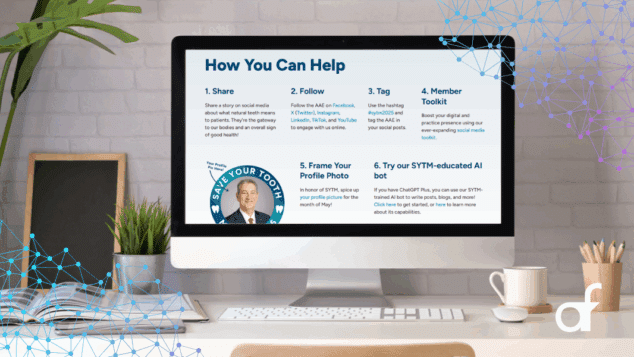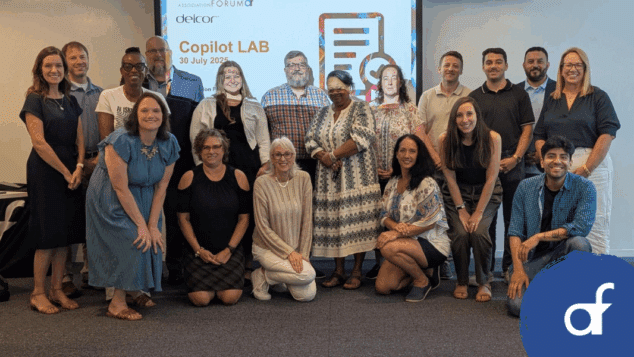Ditch Data Discomfort

The past few years have solidified several trends that, prior to 2020, seemed extremely unlikely to ever gain a foothold in the association world. Remote work, cloud storage, virtual events, robust online communities, to name just a few. While execs continue to debate whether such trends were just temporary solutions that will fade back into obscurity once business and life returned to “normal,” there’s one tech trend nobody seems to dispute as integral to the future of successful businesses across all industries: data. The fact is that associations can no longer afford to write off data-driven business practices if they want to survive, let alone thrive both today and into the future.
Maybe you feel completely comfortable in this new data-centric business landscape—if so, I’m with you! But if you’re not there yet, you’re certainly not alone. How comfortable people feel talking about data depends on a number of factors, from professional training to personality type to where their organization is with its data journey. You might think that you have to be a data whiz or a techie to understand data concepts or to be able to incorporate data-centric terminology into business discussions, but the reality is that data isn’t something mysterious or complex. Getting comfortable with data starts with understanding the meaning of data-related terms, then beginning to think about the ways it might help enhance the work you and your team do or guide future efforts. There are many ways to start your personal data journey, but let’s start with five quick ideas.
Five ways to become more comfortable with data
- Start incorporating data into everyday conversations and activities. Data isn’t something that’s limited to only certain disciplines or job titles, or even particularly complex. If you’re not sure how to even start becoming more comfortable with data, why not start by just talking about it—how is data used in the context of your department’s work, or others? What types of data do various people or departments track and why? How is the information reported? Ask coworkers a few questions or click a link to an article about something data-related in an email newsletter and you’re making progress towards understanding more.
- Become familiar with your organization’s data dictionary, if one exists. A data dictionary is a document that details and defines all data and metadata within a database, repository or collection of repositories. Some associations may maintain such a dictionary, but only for power users and/or technical team members, while others may use the term to refer to more of a glossary that defines, in common business language, what each field means to all association staff. If your association already maintains either (or both) of these resources, familiarize yourself with the various terms. If they don’t have one or either, it’s a good idea to create one. Maybe you could even volunteer to start by documenting the data that your team captures, where it’s stored and the names of relevant fields, then circulate it across the organization so others can contribute.
- Don’t always approach data as black and white. There often isn’t a right or wrong answer; rather a canvas to explore and interpret that will lead to an insight. A common example to illustrate this point is event registrations. You could just look at the total number of registrations to determine the number of attendees and total revenue the event generated, either at intervals leading up to the event or after the fact. However, if you dug further and segmented registrants by role, you might find executive-level registrants down significantly while manager-level registrants exceeded projections. These insights could impact present or future content planning, targeted marketing messages highlighting executive-level offerings, or soliciting post-event feedback from execs about programming they’d value in the future.
- Look for ways to break down existing metrics into actionable insights. For example, if you currently report on member retention at the aggregate level, think about ways of breaking that broad category into smaller segments that might provide actionable insights. For example, one association started to look at retention rate by membership tenure, revealing particularly low retention for members with tenure from one to 18 months. Digging deeper they realized a connection between the one-to-18-month member segment and their student membership program. They were then able to explore potential causes for the lack of conversion of students to regular members. Breaking down their existing retention metric in this manner enabled them to identify actionable insights. Over time the association can track the impact of these actions to see whether they helped to move the needle in a positive direction.
- Use one of the previous four ideas to deepen data exploration. Once you’ve started to get more comfortable with the basics, have fun expanding your new data knowledge! Whether in your own work or as team exercises, here are some ways to build on what you’ve learned:
- Start with a question then look to data for the answer
- Start with an assumption then use data to validate it (or not)
- Start with data then see how many actionable insights you can uncover
- Review historical data and see if you can identify trends, clues and/or anomalies
Whether you try just one of these suggestions, dive into them all or even use them as a basis to begin exploring on your own, you’ll be well on your way to conquering data discomfort.
Tags
Related Articles
Turning AI Into Member Value
How AAE’s Save Your Tooth Month GPT became a personalized marketing assistant for members
The Power of Taking the AI Journey Together
Forum’s first Microsoft Copilot Lab brought together 20 professionals to explore how smart adoption of...
Protecting Healthcare: Tackling Cyber Threats to Hospitals and Patients
The critical role of cybersecurity in healthcare and association management.





